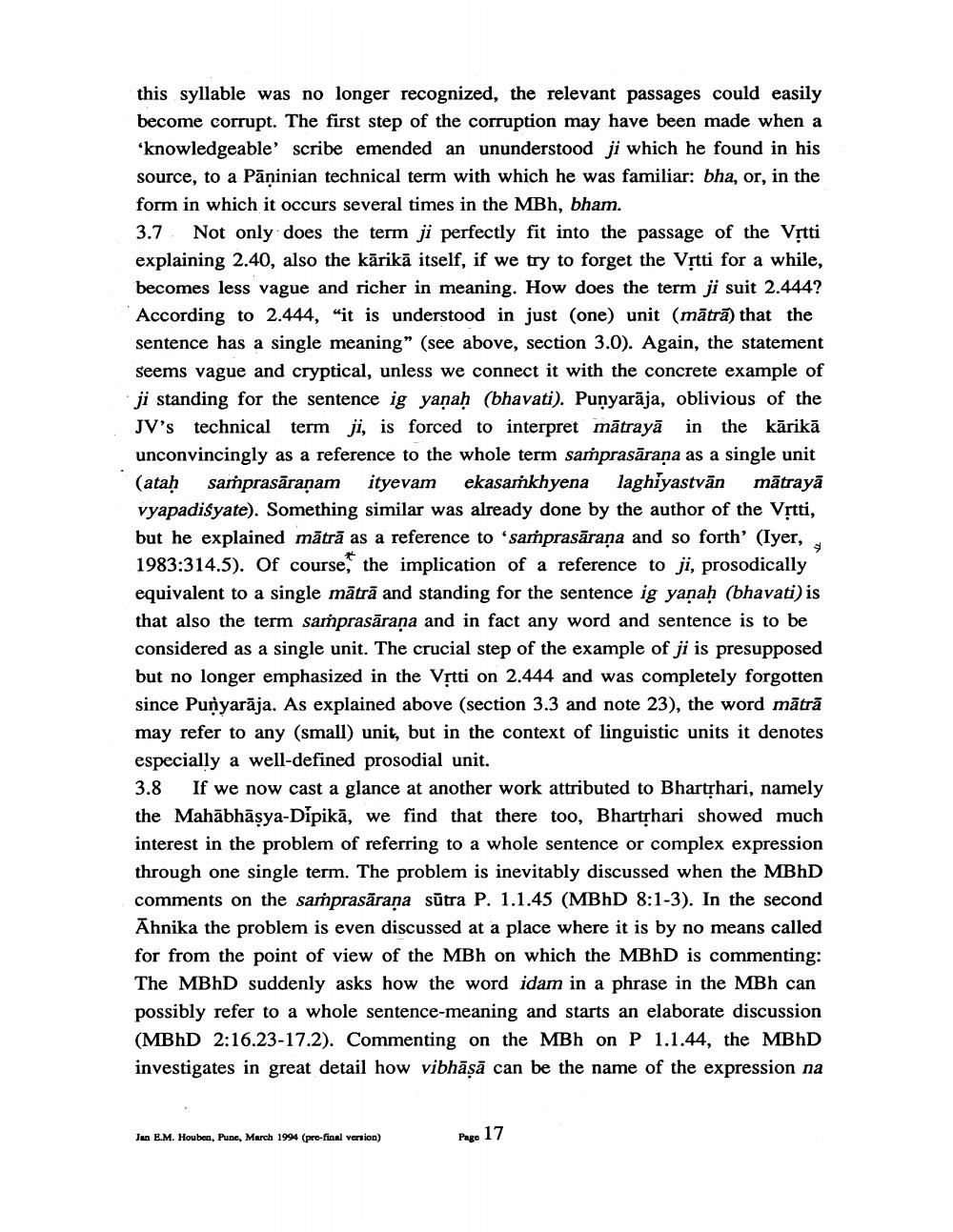________________
this syllable was no longer recognized, the relevant passages could easily become corrupt. The first step of the corruption may have been made when a 'knowledgeable' scribe emended an ununderstood ji which he found in his source, to a Pāṇinian technical term with which he was familiar: bha, or, in the form in which it occurs several times in the MBh, bham. 3.7 Not only does the term ji perfectly fit into the passage of the Vrtti explaining 2.40, also the kārikā itself, if we try to forget the Vịtti for a while, becomes less vague and richer in meaning. How does the term ji suit 2.444? According to 2.444, “it is understood in just (one) unit (mātrā) that the sentence has a single meaning" (see above, section 3.0). Again, the statement seems vague and cryptical, unless we connect it with the concrete example of ji standing for the sentence ig yanaḥ (bhavati). Punyarāja, oblivious of the JV's technical term ji, is forced to interpret mātray) in the kārikā unconvincingly as a reference to the whole term samprasārana as a single unit (ataḥ samprasāranam ityevam ekasamkhyena laghiyastvān mātrayā vyapadiśyate). Something similar was already done by the author of the Vņtti, but he explained mātrā as a reference to samprasārana and so forth' (Iyer, 1983:314.5). Of course, the implication of a reference to ji, prosodically equivalent to a single mātrā and standing for the sentence ig yanah (bhavati) is that also the term samprasāraṇa and in fact any word and sentence is to be considered as a single unit. The crucial step of the example of ji is presupposed but no longer emphasized in the Vștti on 2.444 and was completely forgotten since Punyarāja. As explained above (section 3.3 and note 23), the word mātrā may refer to any (small) unit, but in the context of linguistic units it denotes especially a well-defined prosodial unit. 3.8 If we now cast a glance at another work attributed to Bhartshari, namely the Mahābhāşya-Dipikā, we find that there too, Bhartphari showed much interest in the problem of referring to a whole sentence or complex expression through one single term. The problem is inevitably discussed when the MBhD comments on the samprasārana sūtra P. 1.1.45 (MBHD 8:1-3). In the second Āhnika the problem is even discussed at a place where it is by no means called for from the point of view of the MBh on which the MBD is commenting: The MBhD suddenly asks how the word idam in a phrase in the MBh can possibly refer to a whole sentence-meaning and starts an elaborate discussion (MBHD 2:16.23-17.2). Commenting on the MBh on P 1.1.44, the MBhD investigates in great detail how vibhāṣā can be the name of the expression na
Jan E.M. Houben, Pune, March 1994 (pre-final version)
Page 17




